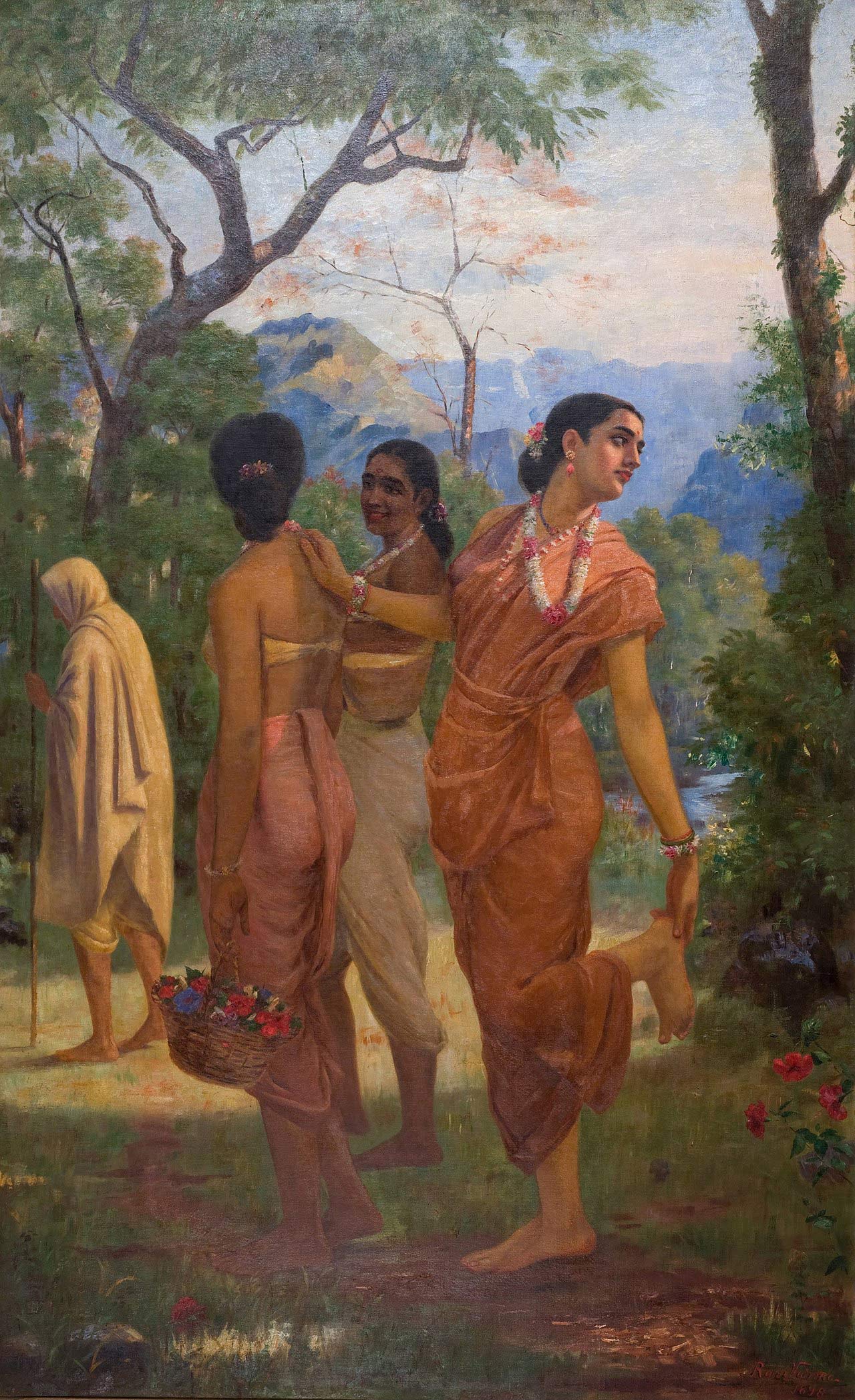
Article Written By EIH Researcher And Writer
Tanisha Kaushik
A few decades after they were introduced into Great Britain during the first two-quarters of the nineteenth century, technological advances began to be applied to India. It was in 1832 when the idea of introducing railways in India was proposed, but not until 1845 that railway companies started to be established in India. Industrialization and trade and commerce both benefited from British railways, one of their greatest capitalist inventions.
From time immemorial, almost every Indian state imposed transit duty on goods passing through its territory. Institutionalization of the railway system in fact possessed hostility to this kind of taxation policies and hence the Princes of India, apprehending its discordancy with modern circumstances, decided for tax abolition. The nature of the princely states of India under British supremacy has been a source of lively debate. Through varying methods and fluctuating outcomes, Indian rulers pursued internal autonomy for themselves. Hyderabad and Cooch Behar, two princely states, greatly exemplify this through railway construction and financing.
British Railways were introduced into Hyderabad State in response to the need to connect British territories to Nizam’s territory. A central geographic position on the map of the subcontinent positioned Hyderabad as the largest princely state in India; the rich soil offered openings for large capital reserves to exploit its potential and could also supply raw materials for industry, especially since cotton production was excellent and coal was a valuable mineral. Secunderabad, a military cantonment and headquarters for subsidiary troops, was situated a few miles north of the capital city. To maintain effective control over the state, the Raj made sure it was well monitored and controlled.
Connecting a city like Hyderabad, which imported goods worth lakhs of rupees from British territory alone, with the major cities of Bombay and Madras, especially the latter, was beneficial commercially. Rail connections would automatically improve the lives of the people, increase Nizam’s revenue, and enhance his prestige, British officials warned. At the same time, it is equally important to consider the personal incentives of the British Government in terms of military, political, and commercial advantages associated with linking Hyderabad with the West Coast.
Salar Jung served as the minister during the period of the Royal Nizam, Afzal-ud-Daula. Although Afzal-ud-Daula was a traditionalist, his minister encouraged reform and modernization of the state. Unlike Salar Jung, who was enthusiastic about the railroad proposal, Nizam remained unmoved by the Minister’s logical and persuasive arguments. This showed his instinctive astuteness. As a result of the railway construction, he resented losing the land that the line would engulf and doubted whether the state’s revenue would increase. He was also concerned that his subjects and relatives would leave the state without his permission. Last but not least, and this was probably the real reason for his opposition, he apprehended that the British would gain increased influence over him.
Nizam was, however, assured that they would be in charge of the Railway in their territory and that they could stop escaping courtiers by telegraph before they left. He, therefore, agreed to the railway proposal unenthusiastically despite his misgivings. Although the Nizam’s State Railway was originally proposed by the British Government, the idea was pressed by Salar Jang, who even agreed to raise the capital on the guarantee of the Nizam. A settlement was reached between the British and Salar Jung in which the British would build and operate the railway line, and Hyderabad would own it and its net profits.
A heavy borrowing for the construction of the line from Hyderabadi bankers strained the state’s money markets after construction began in 1871. This burdened the state’s treasury. Salar Jung decided to bank on the London financial markets for the funds he badly needed after he was shut out of the Hyderabadi money market and was reluctant to bind the state further to the British. Upon restoration, Hyderabad would immediately have a higher cash flow, boosting its standing with local banks, and be able to raise funds for the expansion of the railway into newly discovered coal fields. This somewhat shows that imperial politics and global financial capital play a crucial role in the financing of the Hyderabad railways.
In another princely state, Maharaja Nripendra Narayan wished to improve communication and transport by expanding the railway. His appeal to the British government for a railway extension led to the British government without hesitation granting the request and asking for the extension of the Eastern Bengal State Railway. However, the transport system of Cooch Behar didn’t improve much until 1863 even though it was seized by the British in previous years. But the English commissioner Colonel Houghton paid special attention to the transport system of Cooch Behar during the reign of Maharaja Nripendra Narayan. Nevertheless, the development of the railway system was the result of the British Empire’s policy of manipulation. However, it cannot be denied that this expansion upgraded the quality of life in the princely state as well as its communication system.
The Maharaja instituted various innovative programs to substantially improve the railway system. Before 1896, the railway system did not take any measures to protect its passengers. To ensure the safety of passengers on the railway, Maharaja was the first to recruit railway security. Maharaja assumed that the railway revenue couldn’t be increased unless the state’s road system was properly developed. As a result of this system, the roads were connected to railway ports. The increasing number of travelers and goods on the railways was a natural consequence of this. The trains carrying passengers on this railway were required to stop at Cooch Behar City station for some time. At that time, high-ranking officials and elite passengers had to wait in the station’s restrooms. This class of passengers was accommodated with a five-room rest house constructed near the railway station.
By connecting the major contemporary markets to the railway, the Cooch Behar State Railway contributed considerably to economic progress in the region. During that time, Cooch Behar was famous for the cultivation of jute, tobacco, and other crops, which resulted in an upsurge in exports and imports in this princely state. Consequently, the railway fast-tracked trade and commerce. Cooch Behar had without a doubt gained the importance of prosperous communication centers because of its railway service. It is also universally recognized that Maharaja Nripendra Narayan’s reign was one of the most modern periods in history.
In addition to serving as trade routes and economic instruments, trains, and railways served other purposes as well. Most Maharajas of India who ruled various princely states built their lines around 1880, while others had their heirs build lines on which they could play with their trains. For state visits, matrimonial stopovers, and hunting trips, Maharajas had their carriages clothed in luxury. Many had been constructed and designed in the art deco style. Since 2010, the Maharajas’ Express has redefined luxury train travel in India. The interiors of this train are imbued with nostalgia, as they are designed to imitate the elegance and pomp of erstwhile Maharajas’ carriages. A blend of the elegance of a long-gone age and modern comforts transforms the Maharajas’ Express into a 5 Star experience.
Nonetheless, throughout the history of Hyderabad, from the asserting of unalloyed British political, commercial, and military control to the expansion of domestic and international trade under the Maharaja Nripendra Narayan of Cooch Behar, we see how the British and Princely States fought over their respective sovereignties, and how contested these areas were.
References
- Between Tradition and Modernity: Nizams, Colonialism and Modernity in Hyderabad – State
- Vasant Kumar Bawa – Salar Jang and the Nizam’s State Railway 1860-1883
- Bharati Ray – The genesis of railway development in Hyderabad state: a case nineteenth century British Imperialism
- Dipsikha Sahoo – Creating the Urban Corridors: The Role of Colonial Railways in India
- Sahel Bepari and Medhab Adhikari – Railway Expansion in the Princely state of Cooch Behar – A case study of Maharaja Nripendra Narayan




















